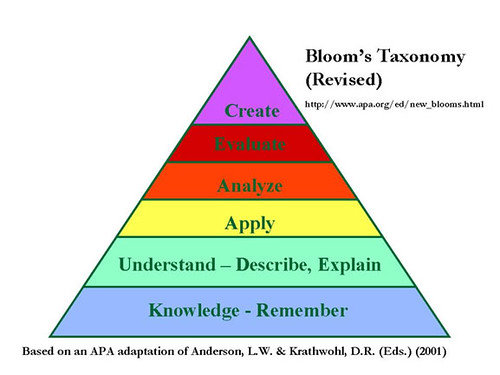In his post “Is Podcasting the New PowerPointing, Or Will We Finally Teach that the Audience Matters?” Christian Long asks good questions about whether podcasting is following PowerPoint, which followed student posterboard presentations, as the modality de-jure of regurgitating back ideas to a traditional school audience (the teacher) in “projects” which reflect little original thinking:
Traditionally, being asked merely to ‘read back’ what one studied demonstrated learning. Engaging the audience was value-added at best. When asked to create a multi-media presentation, students often fall trap to the by-any-crayon-or-gimmick-necessary reflex when finally given an alternative to the traditional assignment. Why? Because for the vast majority of students, the issue of ‘audience’ was never going to be a concern. Or at least an audience beyond the single teacher grading the assignment or the single hiring manager at the factory.
The answer to question in the title of Christian’s post is, for many school contexts, “most likely– podcasting WILL be presented as the new PowerPointing and posterboarding.” Introducing a new technology does not by itself invite new pedagogical approaches to learning. I agree with the idea that inviting students to write and create for an authentic audience may have more potential than other alternatives to change the typical drive of students to focus on “just the facts” in their class projects. That idea is definitely supported by the Bay Area Writing project students in the 6 1/2 minute video “perceptions of student blogging” I put together for MacWorld last week. I don’t think the mere use of tools that have a broader audience, however, like blogs or podcasts, is enough to change traditional instructional patterns in schools. The ways students write on public, classroom blogs may change directly as a result of the audience– but the most common tasks given to students by teachers in schools are not likely to change merely because blogs are present in the instructional environment.
What is needed here is to redefine learning itself in many classrooms, and specifically require that learners move beyond the lower levels of Bloom’s Taxonomy, which focus on knowledge/comprehension (facts and fact regurgitation) rather than understanding and remixing. The 2001 revision of Bloom’s Taxonomy which places the creative act at the top of the pyramid can be a guiding framework for lesson development:
It is important to note, however, that products created under this model should not merely be a regurgitation of knowledge/comoprehension level facts at the bottom of the pyramid. The essence of the creative act should be making connections between different ideas, and within real-world contexts that involve problems with competing interests.
Instead of merely “reading back,” students should “retell” and “remix.” Adding their own ideas and connections to the “facts” of the curriculum should be a hallmark of their knowledge products. At the heart of this process is the teacher, who asks questions which challenge STUDENTS TO ASK questions– rather than asking questions which have a predefined, specific answer. Dr. Monica Beglau’s discussed the importance of this pedagogical approach in her keynote last week at MacWorld’s K-12 Market Symposium.
Technology merely overlaid on a traditional learning model will not result in exciting changes and needed reforms. We don’t need digital worksheets any more than we need students merely replicating the posterboard presentations of the past with more digital glitz (i.e. PowerPoints and podcasts.) What we need is pedagogical change that accompanies the effective and appropriate uses of digital technologies and resources, within a classroom culture of constructivist and inquiry-based learning.
If you enjoyed this post and found it useful, subscribe to Wes’ free newsletter. Check out Wes’ video tutorial library, “Playing with Media.” Information about more ways to learn with Dr. Wesley Fryer are available on wesfryer.com/after.
On this day..
- Optimize Your Website by Enabling GZIP Compression – 2015
- View Kindle Notes on a Webpage – 2011
- HeyTell: Use Your iPhone or Android Phone like a Walkie Talkie #edapps – 2011
- 10 Ways to Write Better Blog Posts – 2011
- Include PBworks wiki pages as repeated header or footer content – 2010
- Protected and inactive organizational Twitter accounts, Digital Footprint Maintenance – 2010
- Link for Frontier PS Teachers – 2010
- Professional Schools and Self-Directed Learning – 2009
- Ohio Education Association gives bad advice on social networking – 2008
- Manage Twitter contacts with Twitter Karma – 2008


Comments
One response to “Elevating Creation in Bloom’s Taxonomy in lesson design”
[…] First, Wes pulled this out on “Bloom’s 2.0″ and then Stephen dug this out on pedagogy defining “School 2.0“. So for reference, this is the original Bloom’s. […]